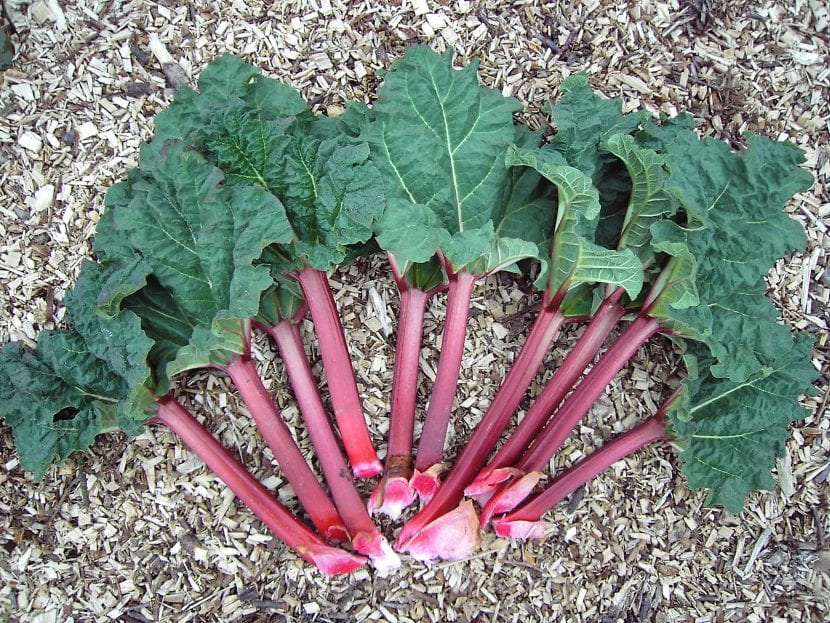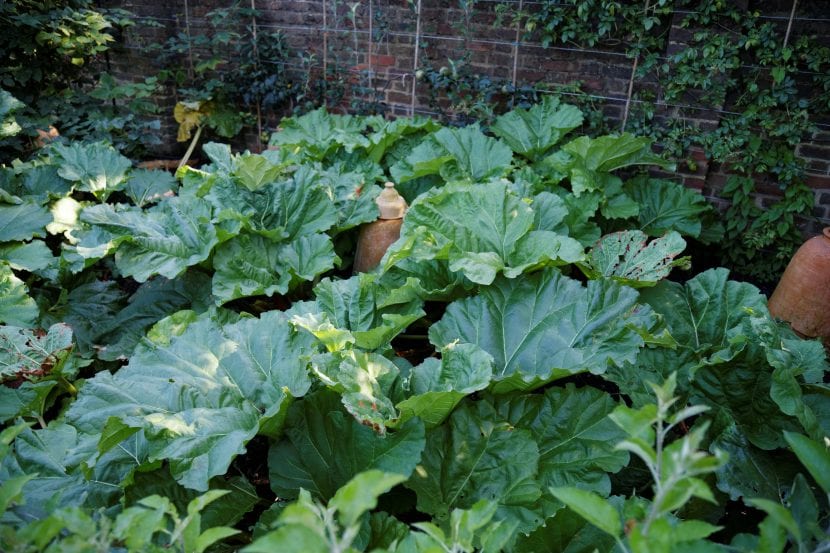
Rhubarb is one of the plants that you can grow both in your garden and in a pot. Thanks to its size, which although it reaches three meters in height, it is a grass that does not have invasive roots, so it is perfect to have in any part of the home.
It is widely used in the kitchen to prepare delicious recipes, such as salads, jams or empanadas. But, Do you know what rhubarb is?
Rhubarb is an herb native to northeastern Europe, specifically Ukraine. It is a phanerogamic plant, that is, that produces seeds to be able to propagate the species, which belongs to the botanical family Polygonaceae, like other vegetables such as Rumex, which is also widely used in cooking.
The large leaves have petioles that are long, thick, up to two inches, and edible.. The color of these can be green or, more commonly, red. The aerial part of rhubarb arises from a rhizome that is found underground. Thanks to this underground organ it can stay alive, since it serves to store nutrients.

Only the petioles take advantage of the rhubarb. The leaves contain a high concentration of oxalic acid, which if it is mixed with metals such as iron, calcium or zinc, the body can have problems absorbing them correctly. Also, in some cases some essential minerals, such as calcium, can become concentrated in unwanted areas, which could cause kidney stones to form.
This plant can live for several years, shedding its leaves in winter and sprouting in spring. Before summer arrives, the leaves must be harvestedas this is when the oxalic acid level is lowest.
Have you been wanting to know how it is grown? If so, click here and enjoy some delicious rhubarb.